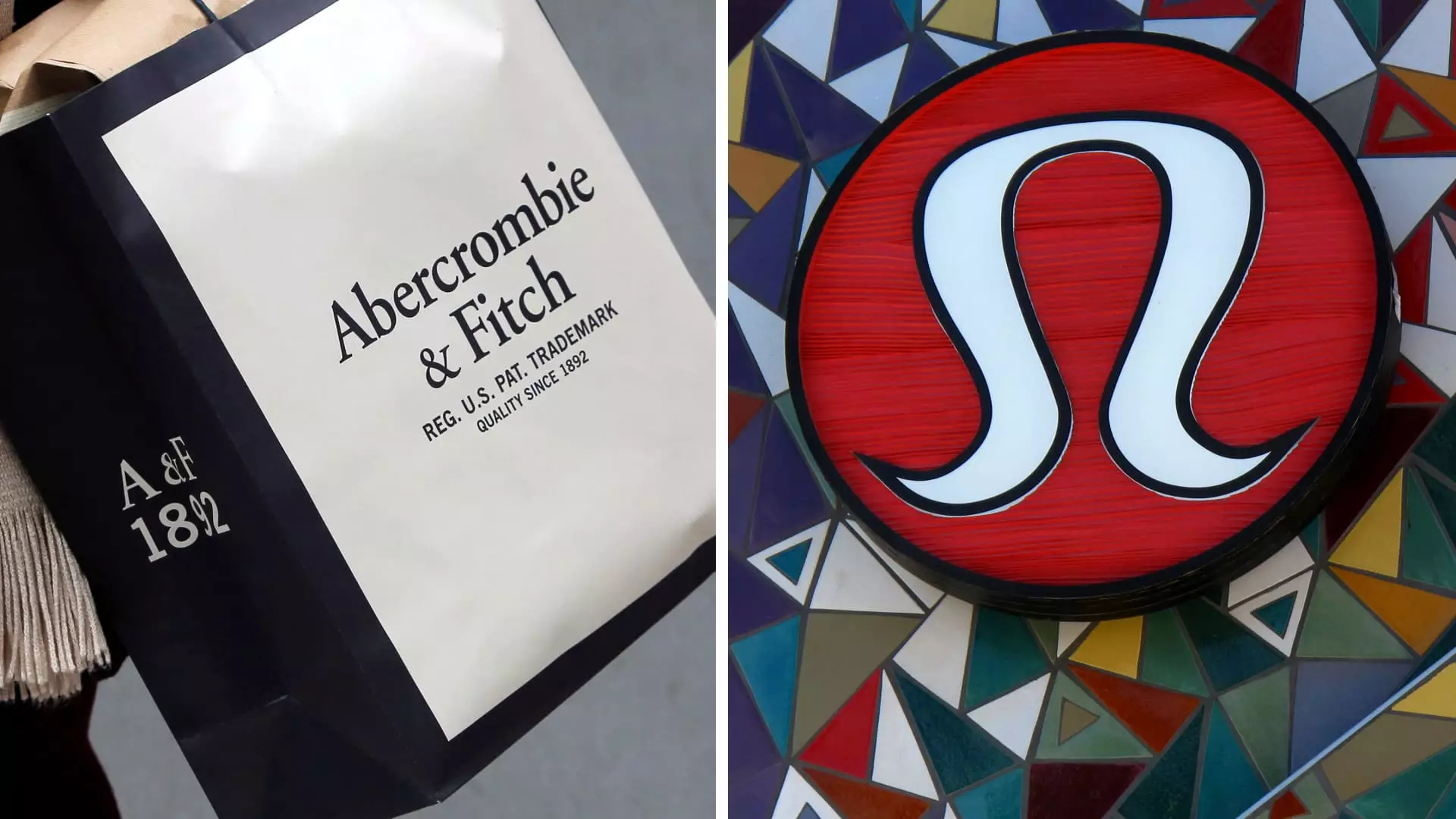As the holiday shopping season unfolds, major retailers are reporting early results that largely exceed expectations. However, the immediate market reaction has raised eyebrows, as many companies see their share prices tumble despite positive financial outlooks. Notable names like Lululemon, Abercrombie & Fitch, and American Eagle are reporting robust holiday sales which prompted them to raise their fourth-quarter forecasts. Yet, this good news seems to be overshadowed by market skepticism and emerging concerns about growth sustainability.
Lululemon has revised its sales growth outlook to between 11% and 12%, expecting revenues to hit between $3.56 billion and $3.58 billion. The sports apparel company has also improved its earnings guidance, reflecting positive responses from customers during this pivotal retail period. Similarly, Abercrombie has nudged its forecasts upward, expecting net sales growth in the realm of 7% to 8%, a positive shift from its prior predictions. American Eagle has also jumped on the bandwagon, increasing its operating profit expectations to about $135 million.
The mixed reactions from investors highlight a notable paradox in the retail market: strong performance does not necessarily translate to heightened investor confidence. This trend prompts the question: What are the underlying factors contributing to this phenomenon?
Investors are increasingly analyzing these companies through a critical lens. Abercrombie, despite its improved forecasts, faced a sharp 17% decline in its stock as investors speculate whether the brand’s rapid growth trajectory may be plateauing. The previous year’s holiday period saw a remarkable increase in sales, and as such, current growth comparisons become more challenging. This scenario creates a natural reluctance among investors; having enjoyed two years of consistent growth, they now grapple with the reality that sustained explosive performance may be unrealistic.
Furthermore, Macy’s released disappointing results that failed to meet expectations, casting a broader shadow over the retail landscape. With forecasts indicating sales may fall slightly below previous estimates, it inevitably adds to investor caution. As one of the prominent department stores, its disappointing performance raises alarms about consumer spending habits, potentially signaling flagging confidence in the retail sector as a whole.
Consequently, it becomes vital to ask how these looming concerns about growth will influence strategic directions for retailers going forward.
A pivotal observation from Abercrombie’s CEO, Fran Horowitz, signifies a larger shift in priorities among retailers—is there a momentous transition from focusing predominantly on sales growth to prioritizing profitable operations? Horowitz has indicated a desire to enhance profits beyond sheer revenue growth, suggesting that companies may seek sustainable business practices that yield long-term value for shareholders. This mindset, if widely adopted, could reshape the retail landscape in profound ways, prompting businesses to innovate not just to drive sales, but to strengthen their profit mechanisms, too.
It is also crucial to consider the broader economic context surrounding this shift. Taking inflation into account, projections for minimal growth may compel retailers to rethink traditional sales strategies. The National Retail Federation’s expectations of only 2.5% to 3.5% growth emphasize the necessity for retailers to adapt swiftly amidst changing consumer behaviors.
Data from Mastercard SpendingPulse indicates a 3.8% year-over-year increase in retail sales over the holiday period. Nonetheless, this data is revealed without accounting for inflation, leading analysts to question the genuine growth rate. If inflation is stripped from the equation, the actual increase may be negligible, highlighting a potential disparity between nominal figures and the real-world economic experience of consumers.
Moreover, with changing shopping patterns, such as the rise of online purchases, retailers face new competitive challenges. Urban Outfitters, for instance, reported mixed results wherein some of its segments, specifically its rental service, demonstrated rapid growth. Yet, overall, the company faced a decline in comparable sales, suggesting that even winning segments can coexist with underperforming divisions.
Economic realities dictate that retailers must remain vigilant and adaptable. As the sector prepares for the upcoming ICR conference—a pivotal platform for industry leaders—many will face the critical task of managing investor expectations while navigating the volatility of consumer preferences and economic pressures.
The current retail landscape signifies a complex interplay of growth, market perception, and economic variables. While early holiday results have many retailers smiling, their share prices tell a different story, indicating an emerging wave of caution among investors. The emphasis on profitability over sheer growth and the necessity for adaptation pose significant questions about the sustainability of retail strategies moving into the future. With changing consumer buying behaviors and economic realities reshaping the sector, retailers must remain agile to navigate this intricate environment successfully.

